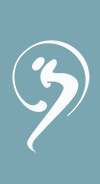Upward Bow or Wheel Pose
Setting up a strong preparation is 90% of accomplishing a back bend. Lie on back, bring feet in as close to buttocks as possible, place them parallel, hip width. Put a block between them to keep that parallel mindfulness in place. Place hand 3-4 inches from ears, fingers toward feet, forearms perpendicular to floor if possible. If elbows splay, place a strap around upper arm, above elbows to maintain parallel power in arms.
Take a breath, exhale into feet, lifting hips up, take another breath and on exhale press hands down and lift chest, placing crown of head on floor. Open shoulder girdle, and press shoulder blades into back as you lift. If this is your first time, remain here, breathing. Come down the same way you went up, ie lift head and release neck, chin down, come onto upper back, then hips. Congratulate yourself…a lot.
If you are fine moving on from here, continue to press inner feet into floor, and rise up like a lotus from your muddy waters. Bring chest toward the hands, not the feet. Work the hamstrings, not the buttocks muscles. The softer the buttocks, the more space you create in lumbar area, lengthening tailbone toward the knees. Work the arms outward, as parallel as possible, with most of weight at base of index fingers. Let head hang.
On the first back bend, it’s nice to rise onto tiptoe, which offers more space to the shoulder girdle, once opened you can lower the heels. If and when breath becomes labored back off the pose. Take it in small bites, not one big gulp.
Health Notes: Don’t work with this pose if you have carpel tunnel, headache, high blood pressure, or serious back issues. Otherwise it’s a fabulous pose to fight depression, to open the heart, feel powerful, to change and challenge old POV’s, and to keep the spine incredibly young. As a chest opener, it good for asthma, and lung ailments. Clearly, it strengthens arms, wrists, and legs, and is therefore good for osteoporosis. It stimulates pituitary and thyroid, increasing energy
 DAILY
DAILY
Comments